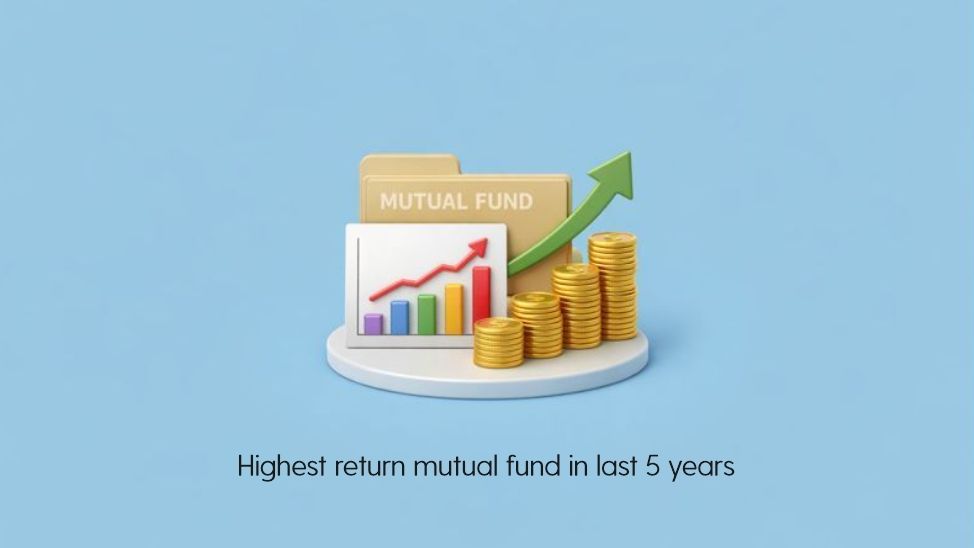Evening Star Candelstick Pattern

- Published Date: June 30, 2025
- Updated Date: June 30, 2025
- By Team Choice
The evening star candlestick pattern is a widely recognized signal in technical analysis, often suggesting a possible reversal from an upward to a downward trend. When spotted correctly, the evening star candle can serve as an early warning sign of a possible trend reversal, making it an essential technical tool for traders.
This article explores the structure, significance, and application of the evening star candlestick pattern in detail.
Evening Star Candlestick - Meaning & Features
The evening star candlestick pattern is a significant indicator in technical analysis, often suggesting an upcoming shift in market direction. This typically signals a shift from an upward price movement to a downward one. This pattern implies that the market's upward drive is fading, and sellers are starting to take control.
To identify a true evening star, look for these defining traits:
- The first candle is a tall, green (or white) one, showing that buyers are confidently pushing prices higher.
- Following this, a compact candle appears, often presenting as either a Doji or a spinning top. This little candle signals that the market is indecisive; neither buyers nor sellers are clearly in charge.
- Lastly, we see a substantial red (or black) candle. This strong bearish candle confirms that sellers have taken over, suggesting that prices are likely to fall.
How Evening Star Pattern Forms: Step-by-Step Breakdown
This evening star candlestick pattern emerges across three trading days and usually appears as an uptrend is concluding. It reflects a shift in market sentiment from bullish to bearish and serves as a signal that the current uptrend might be reversing.
Here’s a step-by-step breakdown of its formation:
1. First Candle – Bullish Momentum:
- A sizeable green (or white) candle forms, indicating robust buying activity and the likely continuation of the prevailing upward trend. Market confidence remains high, propelling prices further skyward.
- We see a long green (or white) candle, which signals strong buyer enthusiasm and suggests the uptrend will persist. Investors are confident, driving prices higher.
- The appearance of a lengthy green (or white) candle demonstrates significant buying power, implying the ongoing uptrend's continuation.
2. Second Candle – A Sign of Hesitation:
- The middle candle in an evening star formation is typically small and can be either bullish or bearish. It often forms following a price gap higher than the prior day's closing.
- This compact candle underscores market uncertainty, showing that neither buyers nor sellers are in control.
- You'll often see it as a Doji or a spinning top, suggesting the uptrend might be losing momentum and a pause is likely.
3. Third Candle – Bearish Confirmation:
- The final component is a substantial red (or black) candle, ideally appearing after a price gap lower.
- This candle's close deep within the first candle's range signifies a powerful bearish reversal.
- It indicates that sellers have gained dominance, potentially signalling the end of the uptrend.
Important Conditions for Validity:
- Prior Uptrend: The pattern must be preceded by a sustained rise in price.
- Gaps: A gap up before the second candle and a gap down after it increase reliability, though not mandatory.
- Volume Spike: A higher volume on the third candle can strengthen the pattern’s credibility.
Psychological Shift Reflected in the Evening Star Pattern
The evening star candlestick pattern is more than just a visual signal on the chart; it represents a significant shift in trader sentiment and market psychology.
Here’s a breakdown of the emotional and psychological transition behind each candle:
- Strong Bullish Sentiment (First Candle): The market begins with confidence, as buyers dominate and drive prices higher. This long bullish candle reflects optimism, strong demand, and continued belief in the uptrend.
- Uncertainty and Caution (Second Candle): The next session shows hesitation. Regardless of its colour or direction, the compact candle signifies market indecision. Traders are uncertain if the uptrend will persist. Bulls are slowing down, and some are beginning to book profits, while bears start testing the waters.
- Bearish Takeover (Third Candle): The final bearish candle confirms a psychological shift. Sellers overpower buyers, signalling that the enthusiasm behind the uptrend has faded. This decisive move often triggers broader selling, as traders recognise the reversal and act on it.
Identifying the Evening Star in Live Markets
Spotting the evening star candlestick pattern in the stock market involves a systematic way of examining price movements. Here’s how to spot it accurately:
- Check for an Ongoing Uptrend: Begin by confirming that the stock is in a clear upward trajectory. This pattern only holds significance when it appears after a sustained rise in price.
- Identify the Initial Bullish Candle: Look for a tall green (bullish) candlestick that reflects strong buying interest and continued bullish momentum.
- Watch for a Candle of Indecision: The second candle should have a small real body, either bullish or bearish. This points to market indecision or a possible temporary halt in the current trend. It commonly appears as a Doji or a spinning top.
- Identify a Prominent Bearish Candle: Look for a strong red (bearish) candle as the third in the pattern. Ideally, this candle opens below the prior one and concludes significantly into the initial bullish candle's body. This formation strongly suggests that sellers are now gaining dominance over buyers.
- Volume Confirmation: Increased trading volume, particularly when the third bearish candle forms, can strengthen the reversal signal. This suggests that selling pressure is building, adding more conviction to the pattern's message.
Strategic Application of the Evening Star Candle in Trading
To effectively trade using the evening star candlestick pattern, it’s essential to follow a structured approach that combines pattern recognition with technical indicators and disciplined execution. Here's how to do it:
1. Analyse Candle Attributes Closely:
Begin by examining the open, close, high, and low prices on the chart. Recognise the evening star formation, generally characterised by:
- An initial strong bullish candle,
- Next, a more compact second candle, regardless of its colour (indicating buyer/seller uncertainty), emerges.,
- This is then succeeded by a substantial bearish candle, which signals a possible shift in the market's direction.
2. Confirm with RSI for Overbought Signals:
To strengthen the reversal signal, think about adding the Relative Strength Index (RSI) to your analysis.
- When the RSI nears or surpasses the 70 mark, it could suggest that the market is overbought.
- If this RSI level coincides with the evening star pattern, it suggests weakening bullish momentum, increasing the probability of a reversal.
- Traders can use this confluence as a cue to begin planning exit strategies or short positions.
3. Determine Entry Point with Pattern Completion:
Once all three candles of the pattern have formed:
- Think about entering a sell trade if the price falls below the lowest point of the third candle.
- This action indicates increasing selling pressure, potentially foreshadowing a downward movement.
4. Set Stop-Loss to Manage Risk:
To limit potential losses:
- Set a stop-loss order just above the pattern's peak, specifically above the second or middle candle's high.
- For tighter risk control, you may choose to position the stop-loss just above the Doji or small-bodied candle, which marks the hesitation phase.
5. Shift to a Lower Timeframe for Precision:
After spotting the pattern and confirming overbought conditions:
- Switch to a shorter timeframe chart (e.g., from daily to 1-hour or 15-minute).
- This helps fine-tune entry and exit levels with greater precision and can improve timing without compromising decision accuracy.
Note: Always pair candlestick analysis with sound risk management, market context evaluation, and technical confirmation tools. No pattern offers guaranteed outcomes, especially in volatile or news-driven markets.
Evening Star Candlestick Pattern - A Practical Market Demonstration
To understand the evening star candlestick pattern in action, let’s look at a practical, real-market example.
Let’s assume we are analysing a daily candlestick chart of a XYZ company during a strong bullish phase:
Pattern Formation Breakdown:
Day 1 – Strong Bullish Candle
- Date: 12 March 2025
- Open: ₹2,300
- Close: ₹2,375
This large green candle signals strong buying momentum and continuation of the ongoing uptrend.
Day 2 – Indecision Candle (Doji/Spinning Top)
- Date: 13 March 2025
- Open: ₹2,390 (gap-up)
- Close: ₹2,395
A small-bodied candle with little price movement. Despite the gap-up, buyers and sellers reached a temporary equilibrium, indicating uncertainty or exhaustion.
Day 3 – Strong Bearish Reversal Candle
- Date: 14 March 2025
- Open: ₹2,370 (gap-down)
- Close: ₹2,280
The pattern is confirmed by a strong bearish candle that closes significantly below the midpoint of Day 1's price range (which was ₹2,337.5). The gap-down open, followed by a decisive drop, suggests a shift in momentum.
Technical Confirmation:
- Relative Strength Index (RSI): RSI stood at 72 on 13 March 2025, calculated using the standard 14-day period, indicating overbought conditions. This supports the likelihood of a short-term reversal.
- MACD (Moving Average Convergence Divergence): Using the standard MACD settings, which are a 12-day EMA and a 26-day EMA, along with a 9-day signal line:
* Here, EMA stands for Exponential Moving Average
On 13 March: MACD line = +15, Signal line = +13, Histogram = +2
On 14 March: MACD line = +12, Signal line = +13.5, Histogram = -1.5
This shift indicates a bearish crossover and declining momentum, consistent with the reversal signal shown by the candlestick pattern.
- Volume Analysis: Volume on 14 March spiked to 2.1 million shares, compared to a 10-day average of 1.25 million shares, a 68% increase. This significant surge in volume adds credibility to the bearish move, signaling strong conviction behind the sell-off.
Resulting Price Action:
Following the confirmed evening star formation, XYZ stock declined from ₹2,280 to ₹2,120 over the next five trading sessions, a drop of approximately 7%.
While this outcome reflects a realistic reaction to the reversal signal, it is one of many possible scenarios, and actual results can vary based on broader market trends, sector performance, and company-specific news.
Disclaimer: This example is for illustrative purposes only and not a recommendation to trade. Always verify any pattern with multiple indicators and stay updated with current market news, volatility, and broader sentiment.
Benefits and Limitations of the Evening Star Pattern
| Advantages | Disadvantages |
|---|---|
| Clear Bearish Indication: Offers a visually distinct signal indicating a potential shift from an uptrend to a downtrend. | Limited Frequency: The pattern doesn’t form frequently, making it less useful for high-frequency trading strategies. |
| Helps Spot Exit Zones: Aids traders in identifying possible points to close long positions or initiate short trades. | False Breakout Risk: If used alone, it can produce misleading signals, especially in volatile markets. |
| Recognisable Formation: The three-candle structure makes it easier for traders to identify on price charts. | Requires Additional Tools: Validate with other indicators, such as the Relative Strength Index (RSI) or Moving Average Convergence Divergence (MACD), to improve its accuracy. |
| Applicable in Multiple Markets: Can be used effectively across various asset classes and chart timeframes. | Performance Can Vary: May lose reliability in choppy or news-driven markets, demanding a careful approach. |
Evening Star Pattern: Accuracy Factors and Market Reliability
The effectiveness of the evening star candlestick pattern in predicting market reversals depends on a combination of technical and market-specific factors. While it is considered a strong bearish reversal signal, its accuracy is influenced by context and confirmation methods:
1. Market Trend Context Matters:
The pattern shows greater reliability when it appears after a pronounced upward trend. A well-established rally provides the necessary backdrop for a potential reversal. However, if the pattern forms during a sideways movement or in a weakly trending market, its predictive value tends to weaken.
2. Volume Adds Credibility:
A surge in trading volume accompanying the third (bearish) candle strengthens the signal. This increased volume suggests broader market participation in the trend reversal, adding more weight to the bearish turn.
3. Wait for Pattern Confirmation:
The pattern is not considered fully confirmed until price action in the following session supports the reversal. A drop in price beyond the low of the third candle enhances the pattern’s reliability and signals that a potential downtrend is underway.
4. Use in Combination with Technical Indicators:
Incorporating additional tools like the Relative Strength Index (RSI), Moving Average Convergence Divergence (MACD), or key support/resistance levels increases the likelihood of making an informed decision. These tools offer extra layers of validation before acting on the pattern alone.
Understanding Market Context and Regulatory Framework
The effectiveness of the evening star candle pattern largely depends on broader market conditions. Recognising where and when the pattern forms is critical for making informed decisions:
- Trend Strength: The evening star is most reliable when it emerges after a strong and sustained uptrend. The reversal signal carries greater significance in these circumstances due to the buildup of substantial bullish momentum.
- Volatility Levels: In high-volatility markets, patterns may get distorted or invalidated quickly. It’s crucial to consider volatility indicators or Average True Range (ATR) before acting on the pattern.
- Sectoral Trends: Some sectors may behave differently during economic shifts. For instance, defensive sectors might not respond to reversal patterns as sharply as cyclical sectors.
Regulatory Oversight in Indian Markets
Trading in Indian capital markets is governed by the Securities and Exchange Board of India (SEBI), which ensures investor protection, transparency, and orderly functioning of financial markets.
Here’s how SEBI’s framework interacts with candlestick-based trading strategies like the evening star:
Key SEBI Guidelines Relevant to Traders:
- Leverage and Margin Rules: SEBI imposes strict margin frameworks under the peak margin norms, limiting exposure and preventing excessive speculation.
- Pattern-Based Trading: While technical analysis is permitted, unsolicited advisory services, including pattern-based trade recommendations without registration, are prohibited.
- Disclosures and Risk Warnings: Brokers and advisors must clearly disclose market risks and cannot guarantee returns from any technical strategy, including candlestick patterns.
- Algo Trading Controls: For those using automated pattern recognition (including evening star detection), SEBI requires compliance with pre-approved algorithmic trading guidelines.
Compliance and Best Practices
- Always trade using SEBI-registered platforms and avoid unverified financial tips or social media-driven strategies.
- Keep documentation of trades, reasons for entry/exit, and risk assessments to stay audit-ready and develop personal trading discipline.
- Be cautious of pump-and-dump schemes or manipulation in small-cap or illiquid stocks, where candlestick patterns may generate false signals.
Regulatory Disclaimer: All trading strategies, including those using the evening star candle pattern, must be applied responsibly, in compliance with regulatory norms. Traders should consult registered investment advisors before executing trades based solely on technical patterns.
Final Thoughts
The evening star candlestick pattern is a widely recognised tool in technical analysis, especially for identifying likely bearish reversals following a significant uptrend. With its three-candle structure, bullish candle, indecisive middle candle, and a strong bearish close, it provides visual clarity and strategic value for traders seeking to identify exit points or initiate short positions.
However, like any trading signal, its success heavily depends on market context, confirmation tools, and risk management practices. It's most effective when:
- Accompanied by indicators like RSI or MACD,
- Its signal is enhanced by a spike in trading activity during the third candle's development,
- And validated through price movement in subsequent sessions.
It’s also essential to consider the broader regulatory environment, particularly in markets like India governed by SEBI, where trading strategies must align with compliance frameworks to ensure investor safety.
Frequently Asked Questions (FAQs)
How effective is the evening star pattern at identifying potential shifts in market direction?
It's considered quite reliable, particularly when it follows a distinct upward trend and is validated by higher trading volume and other confirming technical signals.
Can beginners use the evening star candlestick effectively?
Beginners can use it, but they should also study support/resistance, use demo accounts, and consult experienced traders before relying on it.
On which timeframe does the evening star pattern work best?
Daily and weekly charts tend to offer more reliable signals compared to intraday timeframes.
What distinct market shifts do the Evening Star and Morning Star patterns signify?
The evening star pattern indicates a shift from a rising market trend to a declining one, typically showing up after a period of increasing prices. Conversely, the morning star pattern signals a reversal from bearish to bullish, usually forming after a period of declining prices.
Should I trade immediately after spotting an evening star?
Not necessarily. Wait for confirmation and use other tools for better accuracy before entering a trade.
Recommended for you

FII DII Data - Live Data

Share Market Prediction For Tomorrow

Market Prediction Today (1th December 2025)
